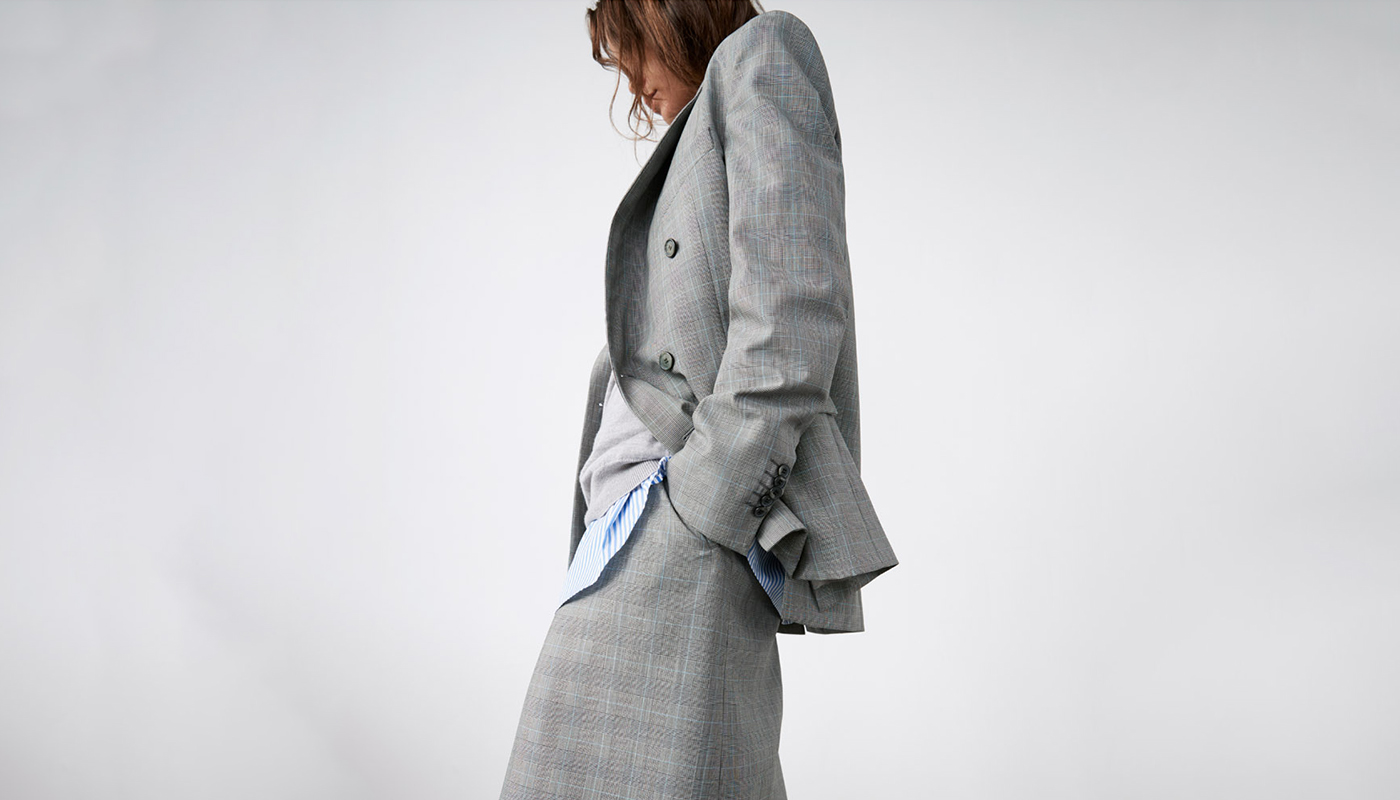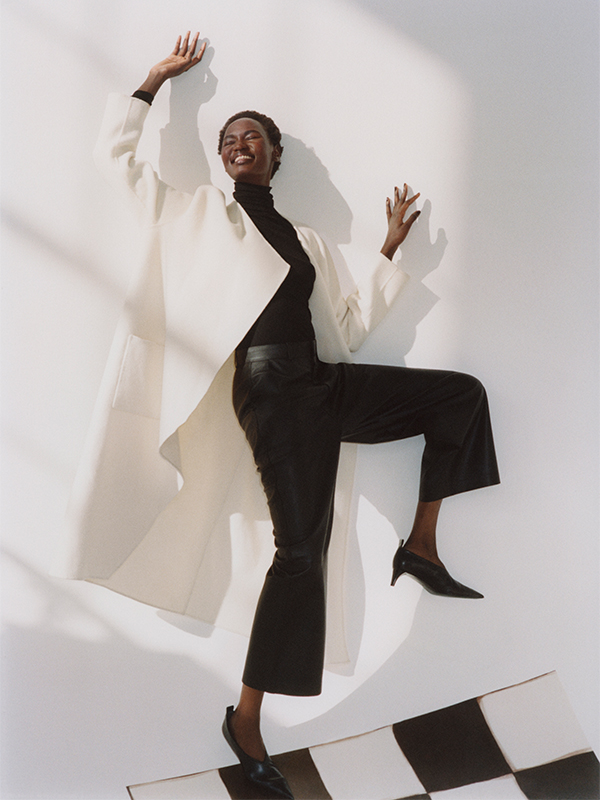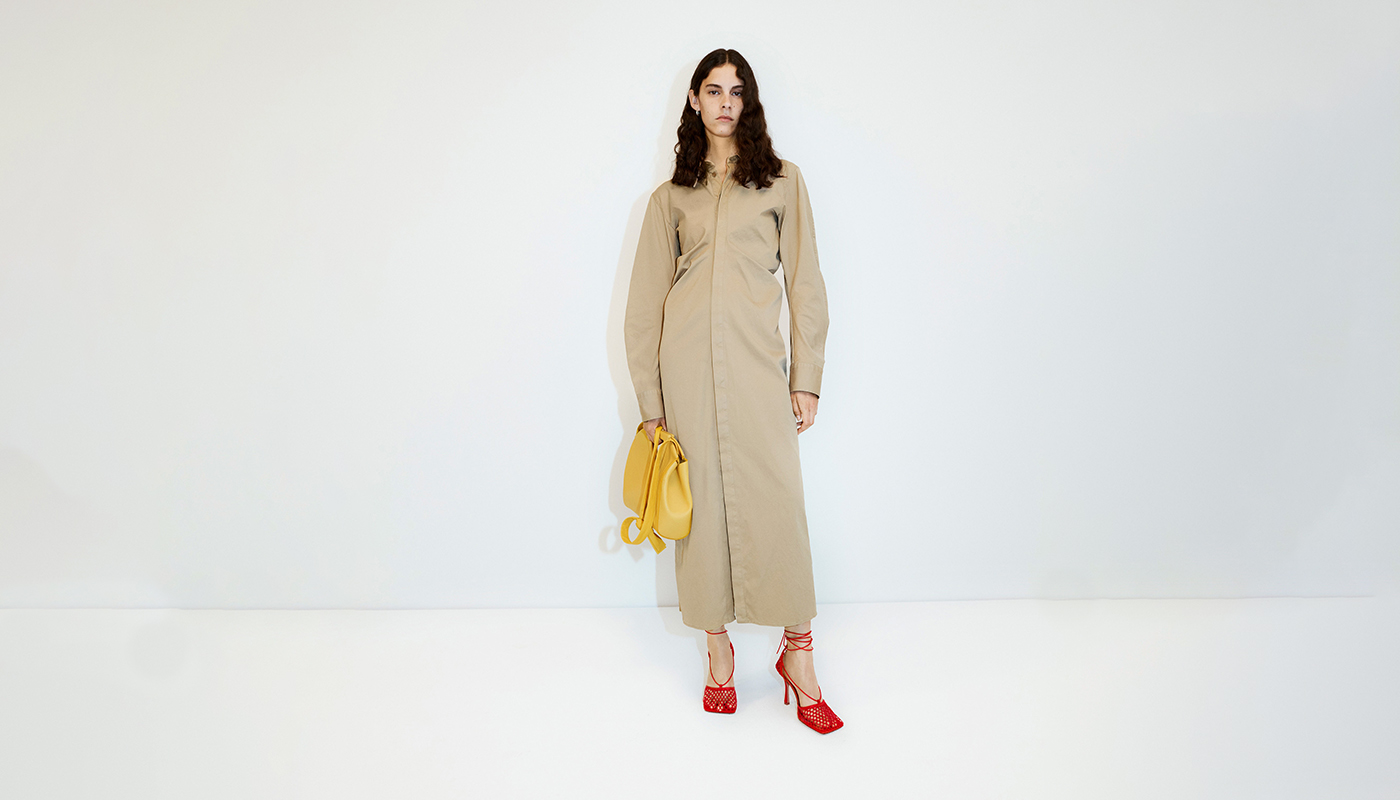Power Dressing 2.0
As a successful entrepreneur, Phoebe Lovatt has always been an expert when it comes to power dressing. Yet at a time where we’re rethinking both our wardrobes and our working styles, she unpacks how our ideas of “power dressing” have shifted, too.

To consider what “power dressing” means in 2020 is to reckon with the changing source of power itself. If clothes are - have always been - a way to state one’s values without saying a word, then the emotional and political upheaval of this year has called for a radical change of dress code. The power dynamics of our world have recalibrated in dramatic and unprecedented ways: Our attitude to getting dressed has, necessarily, changed with them.
In the late 1970s, when the term first entered the cultural lexicon, the wardrobe choices of powerfully-dressed women reflected the work environments they were required to navigate: Hard, unyielding, and oppressively masculine. If a penchant for boxy shoulders and oversized tailoring has endured, it is because women have reclaimed these silhouettes as our own. And as we emerge from our bleary, sweatpanted fugue state and make plans for what we hope (please, God) will be a brighter and better-dressed year ahead, the allure of impeccable tailoring is stronger than ever. “Dress like the woman you want to be”, the adage goes, and I want to be the kind of woman who has somewhere - anywhere - to go in a slick WARDROBE.NYC blazer.


Later on, hard power made way for soft power and the meaning of power dressing shifted once again. Defined as “an ability to attract and persuade”, soft power found its sartorial expression in the quiet, refined sensuality of Old Céline, where Phoebe Philo captured the hearts and minds of a generation. The legacy of that mood lives on in the most coveted pieces of our era: Khaite’s discreetly decadent cashmere cardigan and matching bra is soft power dressing. A buttery Bottega Veneta clutch, tucked under your arm as casually as a loaf of farmer’s market sourdough, is soft power dressing. Jil Sander anything is soft power dressing of the highest order.
Now, experts say, we are moving into an era of “new power” - the kind of “open, participatory, and peer-driven” dynamics that are fueled by the rise of social media and relentless technological advancement. In keeping with the multilayered and amorphous dynamics of our modern era, the rules of new power dressing are more flexible, and more personal, than ever.
New power dressing might mean prioritising rest over work, and choosing to upgrade your sleepwear collection accordingly (La Perla silk pyjamas - my heart beats for you). It could entail a decision to divest from the seasonal trend cycle in favour of a single “forever piece” investment: A classic Balenciaga boot; a timeless LOEWE bag. Or it might mean putting your credit card where your mouth is, and making a steadfast commitment to only buy from brands whose sustainability credentials sit well with you – thank the fashion gods that we live in a time when “conscious dressing” looks like a slinky Marine Serre turtleneck.

For the final word on the matter, I defer once again to Jil Sander, our reigning power dressing queen, who argues that one’s wardrobe is a bolstering foundation when facing an uncertain future: “Not making an effort in the morning will slow down your day and disorient you,” she recently told The New York Times. “If we want to change the world, we have to keep renewing ourselves.”
Whether you take that as a directive to don a Saint Laurent trouser suit or reach, once again, for the Leset loungewear is an entirely personal choice, of course. In 2021, power dressing is yours to define.
Related Reading:
Phoebe Lovatt: The Fabric Of My Working Life
Autumn’s Forever Friends
Wardrobe Update: The Classic Knit
Building A Modern Brand: Totême
See All The Features: